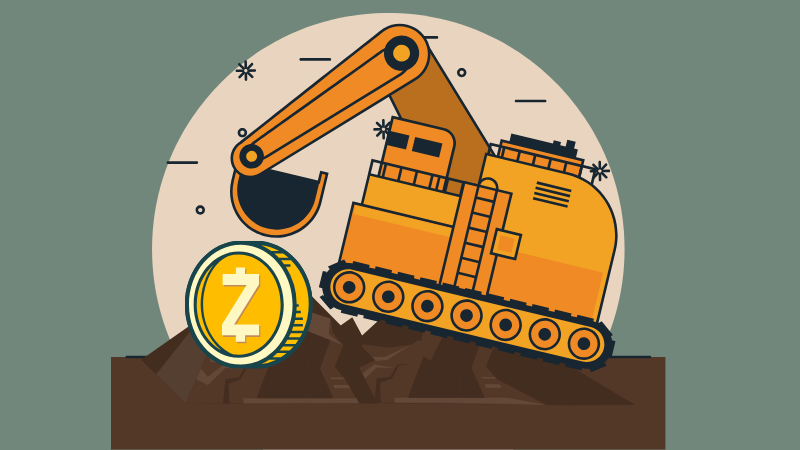Although the best cryptocurrency to mine depends on a lot of factors, in this article, we suggest the most popular cryptos to mine and explain why they are good choices.
Bitcoin (BTC) – One of the Best Crypto to Mine
Bitcoin is the first and most well-known cryptocurrency, created by an anonymous person or group known as Satoshi Nakamoto. It operates on a proof-of-work (PoW) consensus mechanism, which requires miners to solve complex mathematical problems to validate transactions and secure the network.
Bitcoin mining is highly competitive and generally requires specialized hardware known as ASIC (Application-Specific Integrated Circuit) miners.
Pros
- Most valuable and widely recognized cryptocurrency.
- Strong liquidity and market presence.
Cons
- High mining difficulty and competition.
- Requires significant initial investment in ASIC miners.
- High energy consumption.
Ethereum (ETH)
Ethereum is a decentralized platform that enables smart contracts and decentralized applications (dApps). It also uses a proof-of-work system but is transitioning to proof-of-stake (PoS) with Ethereum 2.0, which will eventually phase out mining. Currently, Ethereum mining is still profitable with GPUs (Graphics Processing Units).

Pros
- Mineable with GPUs.
- Large and active development community.
- Strong market presence.
Cons
- Transition to proof-of-stake will reduce mining opportunities.
- Mining difficulty can fluctuate significantly.
Ravencoin (RVN)
Ravencoin is a blockchain specifically designed for the creation and transfer of assets. If Youinterested more in blockchain you can read about blockchain technology advantages and disadvantages. It uses the X16R algorithm, which is ASIC-resistant, making it suitable for GPU mining. Ravencoin aims to improve upon the original Bitcoin protocol by allowing more complex asset transfers.
Pros
- Designed for GPU mining.
- Relatively low mining difficulty.
- Growing community and use case.
Cons
- Lower market cap and liquidity compared to Bitcoin and Ethereum.
- Less established and therefore potentially more volatile.
Litecoin (LTC)
Litecoin is a peer-to-peer cryptocurrency created by Charlie Lee, a former Google engineer. It was designed to produce blocks more frequently and with a different hashing algorithm (Scrypt) compared to Bitcoin. Litecoin mining can be done using ASIC miners, but it is less competitive than Bitcoin mining.

Pros
- Faster transaction times compared to Bitcoin.
- Scrypt algorithm allows for ASIC mining but is less competitive.
Cons
- Lower profitability compared to Bitcoin.
- Market fluctuations can impact profitability.
Monero (XMR)
Monero is a privacy-focused cryptocurrency that uses the CryptoNight proof-of-work algorithm, designed to be resistant to ASIC mining. This makes Monero particularly attractive for CPU and GPU miners. Its main selling point is the strong privacy features that make transactions untraceable.
Pros
- ASIC-resistant, making it accessible to CPU and GPU miners.
- Strong privacy features.
- Relatively stable mining difficulty.
Cons
- Lower market cap compared to top cryptocurrencies.
- Potential regulatory challenges due to its privacy features.
Zcash (ZEC)
Zcash is a cryptocurrency that offers the option of “shielded” transactions, providing enhanced privacy through zero-knowledge proofs. It uses the Equihash algorithm, which is memory-intensive and allows for both ASIC and GPU mining.

Pros
- Strong privacy features.
- Equihash algorithm supports ASIC and GPU mining.
- Growing adoption and use cases.
Cons
- Market cap and liquidity lower than Bitcoin and Ethereum.
- Mining profitability can fluctuate.
Dogecoin (DOGE)
Dogecoin started as a joke based on a popular internet meme but has since gained a strong following and significant market value. It uses the Scrypt algorithm, like Litecoin, and can be mined using ASIC miners.
Pros
- Strong community support.
- High transaction speed.
- Scrypt algorithm is relatively easier to mine with ASICs.
Cons
- Highly volatile market.
- Meme coin status can affect long-term viability.
Comparing the Cryptocurrencies
This table should help you compare and contrast the different cryptocurrencies based on their mining characteristics and decide which might be the best fit for your mining endeavors.
| Cryptocurrency | Mining Algorithm | Mining Hardware | Mining Difficulty | Initial Investment | Profitability | Market Cap & Liquidity | Special Features |
| Bitcoin (BTC) | SHA-256 | ASIC | Very High | High | High | Very High | Widely recognized, high value |
| Ethereum (ETH) | Ethash | GPU | High, fluctuating | Moderate to High | High (until PoS) | Very High | Smart contracts, transitioning to PoS |
| Ravencoin (RVN) | X16R | GPU | Moderate | Moderate | Moderate | Moderate | ASIC-resistant, asset transfer |
| Litecoin (LTC) | Scrypt | ASIC | Moderate | Moderate | Moderate | High | Faster transactions than BTC |
| Monero (XMR) | CryptoNight | CPU, GPU | Moderate, stable | Low to Moderate | Moderate | Moderate | Strong privacy, ASIC-resistant |
| Zcash (ZEC) | Equihash | ASIC, GPU | Moderate | Moderate to High | Moderate | Moderate | Privacy features, zero-knowledge proofs |
| Dogecoin (DOGE) | Scrypt | ASIC | Moderate | Moderate | Moderate | High | High transaction speed, strong community |
Key Points and Explanation
Mining Algorithm – Indicates the specific proof-of-work algorithm used for mining.
Crypto Mining Hardware -Specifies the type of hardware required or most suitable for mining the cryptocurrency.
Mining Difficulty -Refers to how hard it is to mine the cryptocurrency. This often correlates with the overall network hash rate and competition.
Initial Investment – Describes the financial outlay required for effective mining hardware.
Profitability – Indicates the relative potential for earning a profit from mining, considering factors like block rewards, mining difficulty, and hardware costs.
Market Cap & Liquidity – This refers to the market size and ease of trading the cryptocurrency. A higher market cap and liquidity generally mean more stable and predictable returns.
Special Features – Highlights unique aspects of the cryptocurrency that may influence mining, such as privacy features, community support, or additional functionalities like smart contracts.
What is Mining, and How Does It Work?
Cryptocurrency mining is the process of creating new units of cryptocurrency and verifying transactions to add them to a digital ledger called the blockchain. This ledger records all transactions across a network of computers, ensuring transparency and security. Miners are the participants in the network who use powerful computers to solve complex mathematical problems, enabling them to add new blocks of transactions to the blockchain.
Most cryptocurrencies, like Bitcoin, use a system called Proof of Work (PoW). In PoW, miners compete to solve a cryptographic puzzle. The first miner to solve the puzzle gets to add a new block to the blockchain and is rewarded with a certain amount of the cryptocurrency.
This process involves bundling transactions together, solving the puzzle, broadcasting the solution, and having other nodes validate it. Once validated, the block is added to the blockchain, and the miner receives their reward.
Mining hardware varies in power and efficiency. ASIC miners are specialized machines designed for mining specific cryptocurrencies and are very powerful. GPUs, commonly used for gaming, are also used for mining cryptocurrencies like Ethereum.
CPUs, the standard processors in computers, can be used for mining less intensive cryptocurrencies like Monero. The choice of hardware impacts the efficiency and profitability of mining operations.
Profitability in mining depends on several factors: electricity costs, hardware efficiency, the market value of the cryptocurrency, and mining difficulty. Higher cryptocurrency prices and more efficient hardware can make mining more profitable, while higher electricity costs and increased difficulty can reduce profitability.
In summary, cryptocurrency mining involves verifying transactions and adding them to the blockchain by solving complex puzzles. This process secures the network and rewards miners with new cryptocurrency. However, it requires substantial computational power and energy, making hardware choice and electricity costs crucial to profitability.
Summary – Best Cryptocurrency to Mine
The best cryptocurrency to mine varies based on hardware, electricity costs, and market conditions. Bitcoin (BTC) is the most valuable but requires expensive ASIC miners and has very high difficulty. Ethereum (ETH) is profitable with GPUs, but it’s transitioning to a proof-of-stake system, which will reduce future mining opportunities.
Ravencoin (RVN) is GPU-friendly and ASIC-resistant with moderate difficulty. Litecoin (LTC) uses ASICs, offering moderate profitability and faster transactions than Bitcoin. Monero (XMR) supports CPU and GPU mining, emphasizes privacy, and is ASIC-resistant.
Zcash (ZEC) offers strong privacy features and uses Equihash, suitable for both ASIC and GPU mining. Miners use ASICs to mine Dogecoin (DOGE), benefiting from its strong community support and moderate profitability, despite its high volatility.. Each cryptocurrency has unique mining requirements and profitability potential.
FAQ about Best Cryptocurrency to Mine
What is cryptocurrency mining❓
Cryptocurrency mining is the process of validating transactions on a blockchain network by solving complex mathematical puzzles.
How does cryptocurrency mining work❓
Miners use powerful computers to solve cryptographic puzzles, confirm transactions and secure the network, with the first to find a valid solution, add a new block to the blockchain, and earn rewards.
What equipment do I need to mine cryptocurrency❓
Equipment needs depend on the cryptocurrency; for example, Bitcoin typically requires specialized hardware called ASIC miners, while others like Ethereum can be mined using GPUs.
What is the most profitable crypto mining❓
Crypto mining profitability depends on factors like electricity costs, cryptocurrency prices, mining difficulty, and hardware efficiency.
How much electricity does cryptocurrency mining consume❓
Cryptocurrency mining consumes varying amounts of electricity, depending on the cryptocurrency, hardware, and mining difficulty.
What is the best crypto for mining❓
The best cryptocurrency to mine depends on factors like mining difficulty, profitability, and personal preferences, with popular options including Bitcoin, Ethereum, Litecoin, and Monero.
How can I get started with cryptocurrency mining❓
To start mining, choose a cryptocurrency, set up mining hardware and software, consider joining a mining pool, and ensure access to a reliable power source, while staying informed about market trends and regulatory developments.
Is cryptocurrency mining legal❓
While legal in many places, mining’s legality varies by jurisdiction, with some regions having regulations concerning energy consumption, environmental impact, and taxation related to mining activities.
What are the environmental concerns associated with cryptocurrency mining❓
Mining consumes a lot of energy, leading to concerns about carbon emissions and environmental impact, particularly when non-renewable energy sources power operations.
Can I mine cryptocurrency on my smartphone or laptop❓
While technically possible, mining on smartphones or laptops is not recommended due to their limited processing power and the risk of potential device damage; instead, dedicated mining hardware is preferable.
How do you choose the best cryptocurrencies to mine❓
To choose the best cryptocurrencies to mine, consider factors such as the mining algorithm, current profitability, market trends, electricity costs, and hardware compatibility. Conduct thorough research and analysis to maximize profitability and mitigate risks in your mining endeavors.
What are the most profitable cryptocurrency mining❓
The most profitable cryptocurrency for mining can vary over time due to factors like market price, mining difficulty, and electricity costs. As of now, some of the most profitable cryptocurrencies for mining include Bitcoin (BTC), Ethereum (ETH), Litecoin (LTC), Monero (XMR), and Ravencoin (RVN).

